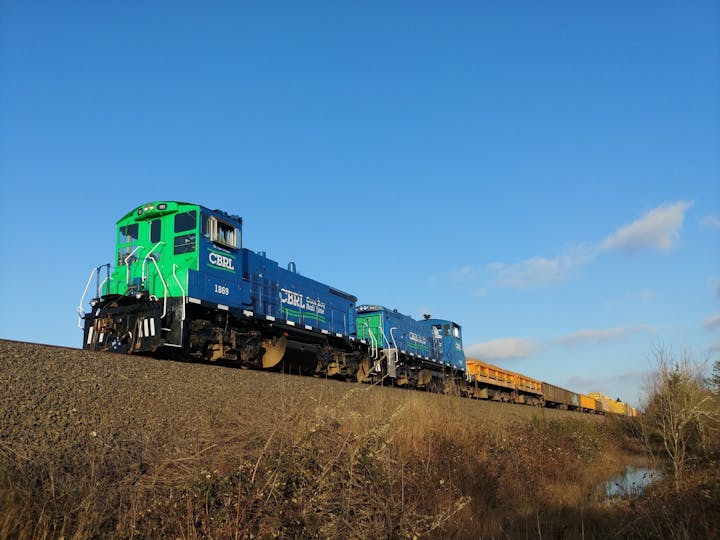Pacific Coast Intermodal Port
The Oregon International Port of Coos Bay has partnered with NorthPoint Development to construct a state-of-the-art container terminal on Port owned property on Coos Bay’s North Spit. The facility will be designed to move nearly 100% of in and outbound containers by rail for landside movements and utilize electrification or other green energy source for moving containers within the yard. This project will provide additional capacity for imports, create a new gateway for U.S. exports, and generate a significant economic impact in rural Oregon.
This project will have three major components. In addition to constructing the container and rail yard, extensive improvements will be made to the Coos Bay Rail Line and the Federally Authorized Coos Bay Navigation Channel will be deepened and widened from -37’ MLLW and 300’ nominal width to -45’ MLLW and 450’ nominal width up to approximately river mile 8.2. Improvements to the railroad will include increasing the air draft of all nine tunnels to accommodate double stack container traffic, extension and addition of sidings, and extensive bridge and rail improvements. The improvements to the Coos Bay Navigation Channel are necessary to accommodate the size ships that will be utilized to transport cargo. The ships that NorthPoint is targeting to transport containers are 13,000 TEU Neopanamax ships.
NorthPoint was approached by some of its largest retail customers to seek to expand container capacity on the west coast prior to the massive levels of congestion seen during the Covid-19 pandemic. Even at this time, major retailers were feeling the impacts of west coast port congestion and were keen to develop an alternative to increase capacity. NorthPoint conducted an analysis of the west coast from Canada to Mexico and determined that Coos Bay was the best location to construct a new facility. NorthPoint had determined that the Coos Bay Harbor was the only location on the U.S. west coast where additional material port capacity could be added.
The PCIP is expected to have a total buildout cost of approximately $2.3 billion. Once funding has been secured, the project timeline is anticipated to be approximately 5 years, with a two-year timeline to obtain all necessary permits and complete a full Environmental Impact Statement and NEPA process. Once permitting and environmental work have been completed, construction is anticipated to take 3 years. Job creation estimates show approximately 2,600 construction jobs over a five-year period, and 2,500 direct and 6,900 indirect jobs in Coos, Douglas and Lane Counties once the facility is constructed.
The PCIP will be the first fully ship-to-rail port facility on the U.S. West Coast, thereby removing trucks from the equation and providing additional port capacity without a corresponding increase in greenhouse gas emissions. The Port will be fitted with electric power plug-ins that will power ships at berth during the process of unloading, which will eliminate ship engine emissions. Ships will be unloaded using electrified ship-to-shore gantry cranes, which will further reduce greenhouse gas emissions and other harmful pollutants.
The Port of Coos Bay is the ideal location to construct the PCIP because not only does it have an existing rail line that connects with the Class I railway network, it also has a naturally deep channel that is maintained annually by the U.S. Army Corps of Engineers. The Port has within its portfolio hundreds of acres of undeveloped land zoned as industrial water dependent use. This project will not just be pivotal for the region and the State; it is of national significance.
Find out more at our new website! Click here: Pacific Coast Intermodal Port project





